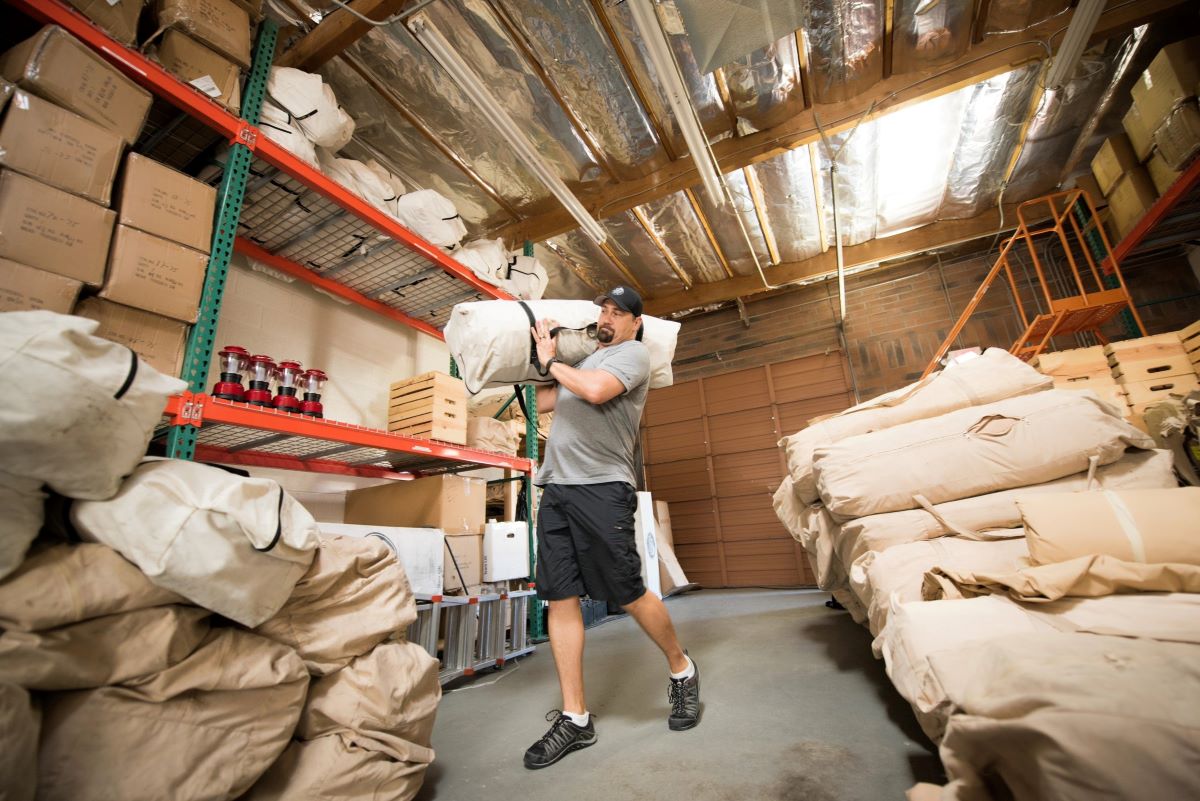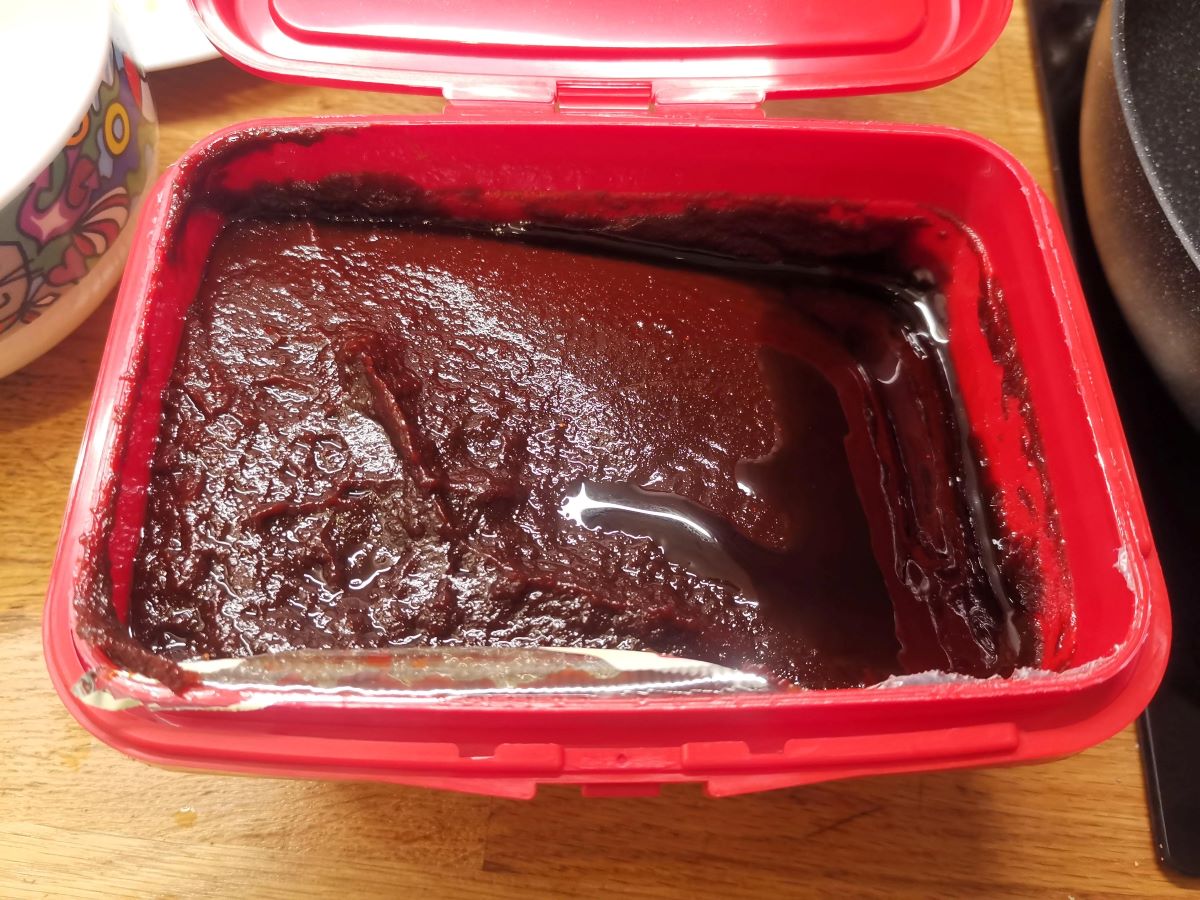

Articles
How To Store Comics
Modified: August 24, 2024
Learn the best techniques and tips for storing comics in this informative collection of articles. Keep your prized comic book collection safe and protected for years to come.
(Many of the links in this article redirect to a specific reviewed product. Your purchase of these products through affiliate links helps to generate commission for Storables.com, at no extra cost. Learn more)
Introduction
Comic books have been a staple form of entertainment for decades. Whether you’re a casual collector or a die-hard fan, properly storing your comics is crucial to preserving their condition and value. Investing in the right storage materials, organizing your collection, and maintaining an optimal storage environment are key steps in ensuring the longevity of your beloved comics.
In this article, we will explore the importance of proper comic storage, provide tips on choosing the right storage materials, discuss preparations before storing comics, and offer guidelines for organizing and labeling your collection. Additionally, we will delve into maintaining an optimal storage environment, protecting comics from damage, and share essential handling and care tips.
By following these guidelines, you’ll be able to protect your comics from wear and tear, prevent common issues like creasing and discoloration, and guarantee their enjoyment for years to come. So, gather your superhero capes and let’s dive into the world of proper comic book storage!
Key Takeaways:
- Proper comic storage is crucial for preserving the condition, value, and accessibility of your collection. Choosing acid-free materials, organizing, and maintaining an optimal storage environment are key to ensuring longevity.
- Handling and care tips are essential for preserving the condition and value of your comic books. From washing hands to avoiding direct sunlight, these measures help minimize the risk of damage and ensure longevity.
Read more: How To Store Comic Books On A Shelf
Importance of Proper Comic Storage
Proper comic storage is essential for several reasons. First and foremost, it helps preserve the condition of your comic books. Comics are delicate items that can easily be damaged by improper handling or exposure to environmental factors such as light, humidity, and temperature fluctuations. By storing them correctly, you can prevent issues like fading, yellowing, and degradation, ensuring that your comics retain their value and visual appeal.
Secondly, proper storage is crucial for the long-term preservation of your comic collection. Whether you’re a casual collector or an avid enthusiast, you likely want your comics to stand the test of time. A carefully stored collection will remain intact for years, allowing you to enjoy and potentially pass down your comics to future generations.
Furthermore, proper storage is essential for the value of your comics. Whether you collect comics for personal enjoyment or investment purposes, keeping them in pristine condition can significantly enhance their monetary worth. Collectors and potential buyers generally prefer comics that have been well-preserved, with minimal signs of wear and tear. By implementing proper storage techniques, you increase the likelihood of maintaining or even increasing the value of your collection.
Lastly, organized and well-maintained comic storage facilitates easy access to your comics. When your collection is neatly arranged and appropriately labeled, you can quickly locate specific issues or series, making it a joy to immerse yourself in the world of comic books. Plus, organized storage reduces the risk of mishandling or accidental damage when searching for particular comics.
Overall, proper comic storage is crucial for preserving the condition, value, and accessibility of your collection. Whether you’re a hobbyist or a serious collector, investing time and effort into implementing proper storage techniques will pay off in the long run. So, let’s explore some key considerations when it comes to choosing the right storage materials for your comic books.
Choosing the Right Storage Materials
When it comes to storing your comic books, selecting the right materials is paramount. Here are some important factors to consider:
1. Acid-Free Bags: Use acid-free polypropylene bags to protect your comics from dust, moisture, and other environmental factors. These bags are specifically designed to prevent acid migration, which can cause yellowing and deterioration of your comics over time.
2. Backing Boards: Insert acid-free backing boards into the bags alongside your comics. These boards provide support and prevent bending or creasing of the pages. Opt for backing boards that fit snugly within the bags without overstretching.
3. Comic Boxes: Invest in sturdy comic storage boxes that are made from acid-free materials. These boxes will provide a secure and protective environment for your comics. Look for boxes with reinforced corners and handles for easy transportation.
4. Divider Cards: To keep your comics organized and prevent leaning or slumping, consider using divider cards. These cards can be inserted between the comics within the box to create sections and help maintain the integrity of your collection.
5. UV-Protected Frames: If you plan to display select comics, invest in UV-protected frames. These frames come with UV-resistant glass or acrylic glazing that filters out harmful UV rays, preventing fading and discoloration of your comics.
6. Silica Gel Packs: To control moisture and prevent mold or mildew growth, place silica gel packs inside your storage boxes. These packs absorb excess moisture and help maintain an optimal humidity level for your comics.
7. Avoid Plastic Wrap or Tape: Avoid using plastic wrap or tape directly on your comics, as they can cause adhesive residue, damage, or staining. Stick to acid-free bags and appropriate storage materials for the best protection.
Remember, choosing the right storage materials is crucial for the long-term preservation of your comics. By investing in high-quality, acid-free materials, you can safeguard your collection from environmental damage and ensure its longevity. Now that we’ve discussed the importance of proper storage and selecting the right materials, let’s move on to the necessary preparations before storing your comics.
Preparation Before Storing Comics
Before you start storing your comic books, it’s important to properly prepare them to ensure their longevity. Here are some crucial steps to take:
1. Clean Your Comics: Before storing your comics, make sure they’re clean and free from dirt and debris. Use a soft, lint-free cloth or a comic-specific cleaning brush to gently wipe the covers and pages. Avoid using water or cleaning solutions unless absolutely necessary, as moisture can damage the comics.
2. Remove Staples or Inserts: If your comics have inserts or staples, such as coupons or subscription cards, it’s best to remove them. These items can cause indents, creases, or even tears over time. Store them separately in acid-free envelopes or sleeves, labeled with their corresponding comic.
3. Handle Comics with Clean Hands: When handling your comics, always make sure your hands are clean and dry. Oils, dirt, and moisture from your hands can transfer onto the pages, leading to stains or damage. Consider using clean cotton gloves if you prefer an extra layer of protection.
4. Store Comics in Sequential Order: If you’re organizing a series or storyline, store the comics in sequential order. This will make it easier to follow the narrative and avoid the risk of misplacing an issue. Label dividers or use index cards to separate different series within the storage box.
5. Take Inventory: Before storing your comics, create an inventory list of your collection. Include the title, issue number, and condition of each comic. This will serve as a reference and help you keep track of your collection’s value and any missing issues.
6. Take Photographs: Consider taking photographs of your high-value or rare comics as a visual record. This will come in handy for insurance purposes, in case of loss, damage, or theft. Store the photographs digitally or print them and keep them with your inventory list.
7. Store in a Cool and Dry Place: Find a storage area with consistent temperatures and low humidity. Avoid basements, attics, or areas prone to moisture or temperature fluctuations. Ideally, the temperature should be between 65 to 75 degrees Fahrenheit (18 to 24 degrees Celsius) and the humidity level should be around 50%. Use a dehumidifier or moisture absorber if needed.
By taking these preparation steps, you’ll ensure that your comics are clean, organized, and properly protected before storing them. With your comics ready and your storage materials selected, let’s move on to the different methods of storing comics, starting with storing them in boxes.
Storing Comics in Boxes
Storing your comics in boxes is one of the most common and efficient methods of comic storage. Here’s how you can properly store your comics in boxes:
1. Select Appropriate Comic Storage Boxes: Invest in sturdy, acid-free comic storage boxes that are specifically designed for holding comic book collections. These boxes are available in various sizes to accommodate different quantities of comics. Choose a size that allows for a snug fit without overcrowding or bending the comics.
2. Use Acid-Free Divider Cards: Place acid-free divider cards vertically inside the box to create sections and organize your comics. These cards help prevent leaning or slumping, keeping your comics upright and in place.
3. Bag and Board Your Comics: Place each comic in an acid-free bag with a backing board. Ensure that the comic is centered within the bag and the backing board is providing support to prevent bending or creasing. Seal the bag with a tape or adhesive strip to keep out dust and moisture.
4. Arrange Comics in the Box: Insert the bagged and boarded comics into the comic storage box, standing them upright in the desired order. Keep the comics tightly packed, but avoid cramming or overstuffing the box, as this can cause damage to the comics. Use additional divider cards as needed to separate different series or titles.
5. Label the Box: It’s helpful to label each storage box with the series or title of the comics inside. This makes it easier to locate specific issues when you want to access or add to your collection.
6. Store in a Cool, Dry, and Elevated Area: Find a suitable storage area that is cool, dry, and elevated off the ground. This helps protect the comics from moisture, pests, and potential flooding. Avoid storing the boxes in direct sunlight or near vents or radiators to prevent heat and light damage to the comics.
7. Regularly Check and Rotate Comics: Periodically check your stored comics for any signs of damage, pests, or environmental issues. Consider rotating the comics by moving the top ones to the bottom of the stack to ensure even exposure and reduce the risk of spine stress.
By storing your comics in boxes with acid-free bags and backing boards, you can protect them from dust, moisture, and other potential risks. With proper arrangement, labeling, and storage location, you’ll have a well-organized and easily accessible comic collection. However, if you prefer a different method of storing your comics, consider using bags with backing boards instead.
Read also: 14 Best Comic Storage Box For 2024
Storing Comics in Bags with Backing Boards
Another popular method of comic storage is using bags with backing boards. Here’s how you can store your comics using this method:
1. Select Acid-Free Comic Bags: Choose acid-free polypropylene or Mylar comic bags that are specifically designed for preserving comic books. These bags are durable and provide protection against dust, moisture, and UV light. Make sure the bags are the appropriate size for your comics.
2. Insert Acid-Free Backing Boards: Slip an acid-free backing board into each comic bag. These backing boards provide support and help prevent bending, creasing, or warping of the comics. It’s important to use backing boards that fit snugly within the bag without overstretching it.
3. Bag and Board Your Comics: Carefully place each comic between the backing board and slide them together into the comic bag. Ensure that the comic is centered within the bag and the backing board is providing adequate support to protect the pages.
4. Seal the Bag: Once the comic is in the bag with the backing board, seal the bag using the adhesive strip or tape provided with the bags. This helps keep out dust, moisture, and other environmental factors that can damage the comics over time. Avoid using regular tape or adhesive that can leave residue or damage the bag.
5. Store the Bagged Comics: After bagging and sealing each comic, you can store them upright or lay them flat in a dedicated comic box or storage container. Make sure the box is made from acid-free materials and provides a secure and protected environment. You can use dividers or index cards to separate different series or titles within the box.
6. Label the Box: Similar to storing comics in boxes, it’s essential to label the storage box with the series or title of the comics inside. This makes it easier to locate specific issues when accessing or expanding your collection.
7. Store in a Cool, Dry Area: Find a suitable storage area that is cool, dry, and away from direct sunlight. Avoid areas with excessive heat, high humidity, or extreme temperature fluctuations. Keeping the comics in a stable environment helps preserve their condition and longevity.
Storing your comics in bags with backing boards offers individual protection for each comic while allowing flexibility in organizing and expanding your collection. However, regardless of the storage method you choose, it’s important to keep your comics organized and maintain an optimal storage environment to preserve their condition and value.
Now that we’ve covered different methods of storing comics, let’s explore the crucial aspects of organizing and labeling your comic book collection.
Store comics in acid-free bags and boards to protect them from moisture and damage. Keep them in a cool, dry place away from direct sunlight to prevent fading.
Organizing and Labeling Comic Collections
Keeping your comic collection organized and properly labeled is essential for easy access and maintenance. Here are some tips to help you efficiently organize and label your comic books:
1. Categorize by Series or Title: Start by categorizing your comics based on series or title. This allows you to group together issues from the same storyline or universe. For example, you can create sections for Marvel, DC, independent publishers, or specific titles like “Spider-Man” or “Batman.”
2. Utilize Dividers or Index Cards: Use dividers or index cards to create sections within your storage boxes. Place them between different series or titles to keep your comics organized and prevent leaning or slumping. You can label the dividers with the relevant series or title for easy reference.
3. Sort by Chronological Order: Arrange your comics within each series or title in chronological order. This allows you to follow the storyline and easily locate specific issues. Start from the first issue and continue in numerical order. Alternatively, you can categorize by story arcs or crossover events if you prefer.
4. Labeling: Label each storage box or container with the series or title of the comics inside. You can use adhesive labels, index cards, or printed labels for a more professional look. This makes it effortless to identify specific comics when retrieving or adding to your collection.
5. Inventory and Database Software: Consider using inventory or database software to keep track of your comic collection. These tools allow you to input information about each comic, such as title, issue number, condition, and any special features. It can also help you easily search and filter your collection for specific comics or creators.
6. Digital Cataloging: If you want to keep a digital catalog of your comic collection, you can use spreadsheet software or specialized comic cataloging apps. These tools provide a digital record of your collection, which can be helpful for insurance purposes or sharing your collection with others.
7. Update and Maintain: Regularly update your labeling system and inventory as you add new comics to your collection. This ensures that your organizational system remains up-to-date and accurate. Consistently maintain the organization of your collection by keeping comics in their designated sections and boxes.
By effectively organizing and labeling your comic collection, you’ll be able to easily locate and enjoy your favorite issues. Whether you’re a casual reader or a seasoned collector, an organized collection enhances the overall experience and protects the condition of your comics.
Now that we’ve covered organizing and labeling, let’s explore the importance of maintaining an optimal storage environment for your comic books.
Maintaining an Optimal Storage Environment
Creating a suitable storage environment is crucial for preserving the condition and longevity of your comic books. Here are some key factors to consider in maintaining an optimal storage environment:
1. Temperature: It’s important to store your comics in a cool and stable temperature environment. Fluctuations in temperature can cause the pages to expand or contract, leading to warping or other forms of damage. Aim for a temperature range between 65 to 75 degrees Fahrenheit (18 to 24 degrees Celsius).
2. Humidity: High humidity can promote the growth of mold, mildew, and other forms of moisture-related damage. Aim for a relative humidity level between 45% to 55%. Using a dehumidifier or moisture absorber can help in maintaining a stable humidity level within your storage area.
3. Air Circulation: Proper air circulation in your storage space is important to prevent stagnant air, which can contribute to mold growth and deterioration. Ensure that there is adequate ventilation in the storage area, allowing fresh air to circulate and maintain a stable environment.
4. Light Exposure: Ultraviolet (UV) light can cause fading and discoloration of your comic books. It’s crucial to keep your comics away from direct sunlight and sources of artificial UV light. If you choose to display your comics, consider using UV-protected frames or display cases.
5. Pest Control: Pests such as insects and rodents can cause significant damage to your comic collection. Take preventive measures to keep pests out of your storage area, such as sealing any cracks or entry points and regularly inspecting for signs of infestation. Consider using pest control products or consulting professional services if necessary.
6. Handling Guidelines: Proper handling of your comics is essential in maintaining their condition. Always handle your comics with clean, dry hands or wear cotton gloves to prevent oils, dirt, and moisture from damaging the pages. Avoid bending, creasing, or excessively flipping through the pages when reading or showing your comics.
7. Regular Checks and Maintenance: Regularly inspect your stored comics for any signs of damage, pests, or environmental issues. Check for any changes in temperature, humidity, or air quality in your storage area. Review your inventory and labeling system periodically to ensure accuracy and make any necessary updates.
By maintaining an optimal storage environment, you can greatly extend the lifespan and quality of your comic books. A stable temperature and humidity, along with proper air circulation and protection from light exposure, are essential factors in preserving the condition and value of your collection.
Now that we’ve covered the importance of maintaining an optimal storage environment, let’s explore some ways to protect your comics from common damages.
Protecting Comics from Damages
Protecting your comic books from common damages is vital to ensure their longevity and value. Here are some key measures you can take to safeguard your comics:
1. Acid-Free Storage Materials: Use acid-free comic bags, backing boards, and storage boxes to prevent acid migration and deterioration. Acidic materials can cause yellowing, staining, and degradation of your comics over time. Choosing acid-free materials provides a protective barrier against these damaging effects.
2. UV Protection: Ultraviolet (UV) light can fade and discolor comic book covers and pages. Keep your comics away from direct sunlight and use UV-protected frames or display cases if you choose to display them. These protective enclosures help filter out harmful UV rays and preserve the vibrancy of your comics.
3. Handling with Care: Handle your comics with clean, dry hands or wear cotton gloves to avoid transferring oils, dirt, or moisture onto the pages. Be gentle when turning pages and avoid bending or creasing them, as this can cause permanent damage. Support the spine of the comic when reading, to prevent stress or weakening of the binding.
4. Avoid Humidity and Moisture: Moisture can lead to mold, mildew, and moisture-related damage to your comics. Store your comics in a cool and dry environment with a stable humidity level between 45% to 55%. Use moisture absorbers or dehumidifiers to help maintain optimal conditions and prevent moisture-related issues.
5. Protection from Moisture Sources: Ensure that your storage area is protected from potential sources of moisture, such as leaks, flooding, or condensation. Avoid storing your comics near water pipes, air conditioning units, or areas prone to excessive humidity. Place your storage boxes on elevated surfaces, away from potential water damage.
6. Avoid Excessive Handling: Excessive handling and frequent removal of comics from their storage can increase the risk of accidental damage or wear and tear. Minimize handling to only when necessary, and avoid unnecessary flipping or bending of the pages. When reading or displaying comics, handle them with care and return them to their proper storage afterward.
7. Regular Inspections: Regularly inspect your comics for signs of damage, such as tears, creases, or insect infestation. Check the storage materials for any signs of deterioration or wear. Replace damaged or worn-out bags, boards, or storage boxes promptly to ensure continued protection for your comics.
By implementing these protective measures, you can significantly reduce the risk of damage to your comic books. With acid-free storage materials, proper handling techniques, and a focus on controlling moisture and light exposure, you can ensure the long-term preservation of your collection.
Now that we’ve discussed protecting your comics from damages, let’s explore some essential handling and care tips to maintain the condition of your comic books.
Read also: 15 Best Comic Storage For 2024
Handling and Care Tips for Comic Books
Proper handling and care are essential to maintain the condition and value of your comic books. Here are some important tips to follow:
1. Wash Hands and Use Gloves: Before handling your comics, wash your hands thoroughly with mild soap and dry them properly. If preferred, wear clean cotton gloves to prevent oils, dirt, or moisture from transferring onto the pages. This helps preserve their integrity and prevents staining or damage.
2. Avoid Eating and Drinking: Refrain from eating or drinking while handling your comics. Accidental spills or food residue can lead to permanent stains or damage. Keep liquids and food away from your comic collection to avoid any potential accidents.
3. Support the Spine: When reading or displaying comics, support the spine of the book with one hand while gently turning the pages with the other. This helps prevent stress or weakening of the binding. Avoid spreading the comic fully flat, as it can cause strain on the pages and the binding.
4. Store Vertically or Lie Flat: When storing your comics, either store them vertically or lie them flat. If stored vertically, ensure that they are snugly fit and supported by dividers or index cards. If lying flat, avoid stacking too many comics on top of each other to prevent excessive weight and pressure on the bottom issues.
5. Avoid Direct Sunlight and Heat: Protect your comics from direct sunlight and high temperatures, as they can cause fading, discoloration, and deterioration of the pages. Store your comics in a cool, dry area away from windows or heat sources to maintain their condition.
6. Keep Away from Moisture: Moisture can cause mold, mildew, and other types of damage to your comics. Store them in a dry environment with stable humidity levels between 45% to 55%. Use dehumidifiers or moisture-absorbing products if necessary to maintain optimal conditions.
7. Handle with Care During Transportation: If you need to transport your comics, ensure they are properly protected. Use sturdy comic storage boxes or bags with backing boards to prevent bending, creasing, or accidental damage. Avoid placing heavy objects on top of your comics during transportation.
8. Avoid DIY Repairs: If you notice any damage or issues with your comics, avoid attempting DIY repairs. Improper repair attempts can cause more harm than good. Instead, consult a professional comic book restoration specialist for expert advice and assistance.
By following these handling and care tips, you can minimize the risk of damage and preserve the condition of your comic books. Properly handling, storing, and protecting your comics will ensure their longevity and allow you to enjoy them for years to come.
Now that we’ve covered handling and care tips, let’s conclude our exploration of proper comic book storage.
Conclusion
Proper comic book storage is essential for preserving the condition, value, and enjoyment of your beloved collection. By investing in the right storage materials, organizing and labeling your comics, and maintaining an optimal storage environment, you can protect your comics from damage and ensure their longevity.
Choosing acid-free storage materials such as bags, backing boards, and storage boxes is crucial in preventing acid migration and deterioration. Proper organization and labeling based on series or title, along with chronological sorting, make it easier to locate and appreciate your comics.
Maintaining an optimal storage environment by controlling temperature, humidity, ventilation, and light exposure is essential. Regular inspections, care during handling, and protection from moisture and pests are crucial aspects of safeguarding your comics from common damages.
Remember to handle your comics with care, avoid moisture, direct sunlight, excessive heat, and minimize excessive handling. Extra precautions during transportation and refraining from DIY repairs will also contribute to the overall preservation of your collection.
Whether you collect comics for personal enjoyment or investment purposes, implementing these storage and care practices will ensure the longevity of your comics and help maintain their value over time. Your collection will remain a source of joy and admiration for you and potential future generations.
So, take the time to properly store, organize, and protect your comics. By doing so, you’re preserving a piece of pop culture history and ensuring that the adventures and stories within your comics continue to bring joy and inspiration for years to come.
Frequently Asked Questions about How To Store Comics
Was this page helpful?
At Storables.com, we guarantee accurate and reliable information. Our content, validated by Expert Board Contributors, is crafted following stringent Editorial Policies. We're committed to providing you with well-researched, expert-backed insights for all your informational needs.














0 thoughts on “How To Store Comics”